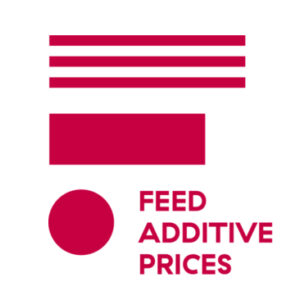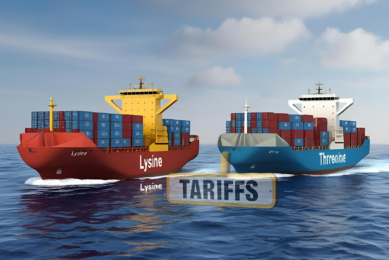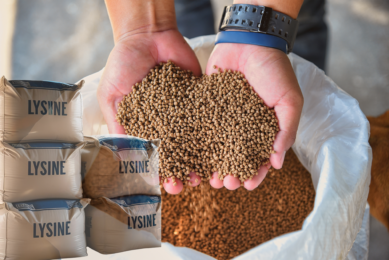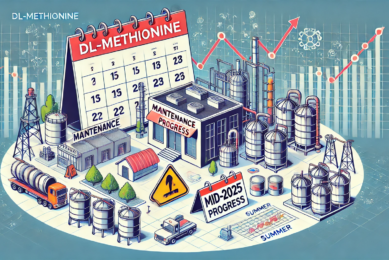Vitamins spared from US tariffs, but market sentiment remains weak

Despite the latest round of US import tariffs on Chinese goods, feed-grade vitamins appear to be largely exempt—offering short-term relief to buyers. However, exemption hasn’t translated into strength, as most vitamin markets continue to show weak or cautious sentiment. While prices for some vitamins remain stable, others are under downward pressure due to subdued demand and regional currency shifts. This report breaks down current trends and Q2/Q3 outlooks for key vitamins including E, A, D3, B-complex, and C.
In partnership with Feed Additive Prices
Vitamin E 50%
Prices ex-China have recently shown a more stable price trend, although the underlying sentiment remains careful/weakish. Suppliers still have a strong desire for stable/higher prices, and several plant maintenance periods have been announced. But so far the market is not supporting higher prices yet. Vitamin E seems to be exempt from the latest round of USA import tariffs and as a result, no significant price change is seen so far. The overall vitamin E market is stable to weak. Q2 is mostly contracted and a small portion of Q3 is as well.
Vitamin A 1000
The latest announced import tariffs into the USA seem to have no effect so far, as vitamin A seems to be exempt. So, overall the market continues to show signs of weakness, with prices declining further across most regions last week, and BASF has still indicated plans to resume production soon. Many buyers are currently taking a cautious approach, purchasing only as needed, and it is noteworthy that the second quarter is already largely contracted.
Vitamin D3 500
Despite ongoing challenges with low stock levels and tight availability, there has been a bit more decline seen in market prices, although they remain elevated. Vitamin D3 500 seems to be unaffected by the latest import tariffs into the USA, as vitamins are exempt from that. A significant portion of Q2 has already been contracted, as buyers anticipated little in terms of immediate price relief. For Q3, buyers have become more conservative and wait.

Vitamin B2 80%
The vitamin B2 market remains steady, showing no significant changes compared to previous weeks, with consistent pricing and a favourable outlook on supply availability. Also in the USA the prices have stayed relatively stable so far, as it seems that vitamin B2 is exempt from the latest announced import tariffs. Looking ahead, no major fluctuations are expected in the near future. Most contracts for the second quarter are already secured.
D-Calpan
The vitamin B5 market remains largely stable across most regions, with Europe experiencing a slight decrease in prices attributed to a more favourable exchange rate of the Euro against the US dollar. Prices in USD have shown a modest increase, but as it seems that vitamins are exempt from the latest announced import tariffs, it is to be seen if d-calpan has a basis to increase further in price. A significant portion of contracts for the second quarter has already been secured.
Vitamin B3
Despite the weaker market sentiment observed over the past few weeks being largely factored in, the overall mood remains somewhat stable to weak. In Europe, the recent strength of the EUR-USD has contributed to downward price trends. In the USA, market stability is maintained as price drops are mitigated by increased import duties. Although it seems vitamin B3 is exempt from the latest import tariffs. Q2 is basically contracted and as prices are low, some of Q3 has recently been contracted as well.
Biotin
Until now, it seems that feed-grade vitamins are exempt from the latest import tariffs for import into the USA and this potentially includes biotin then. Apart from that, the biotin market has demonstrated consistent stability over the past few months, maintaining a historically low level without significant fluctuations anticipated in the near future. Most contracts for Q2 and a portion of Q3 have been finalized.
Vitamin C 35% mono
Market trends indicate a decline in vitamin C prices across several regions, although suppliers are eager to raise or stabilise their prices. In the United States, this decline is less seen due to the implementation of the first rounds of import duties. But the most recent round of import tariffs does not seem to affect vitamin C as it is exempt from that, as are all vitamins. With a significant portion of the second quarter already contracted, the market is adopting a wait-and-see approach regarding future business.











